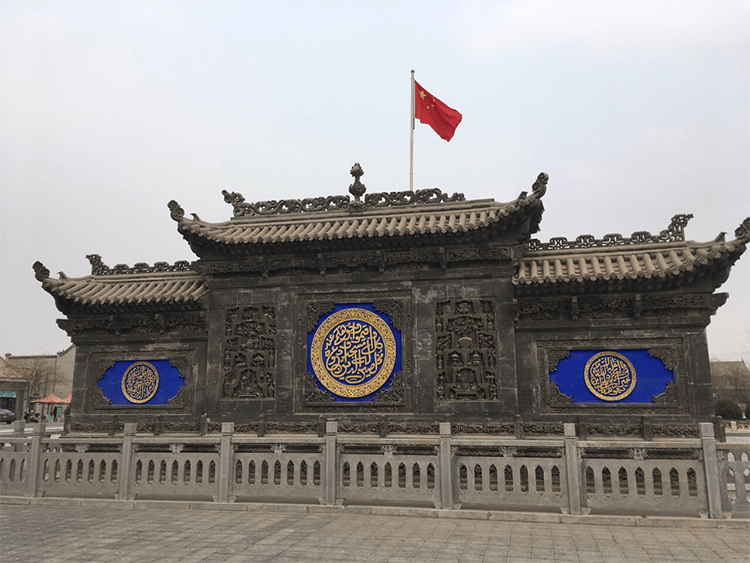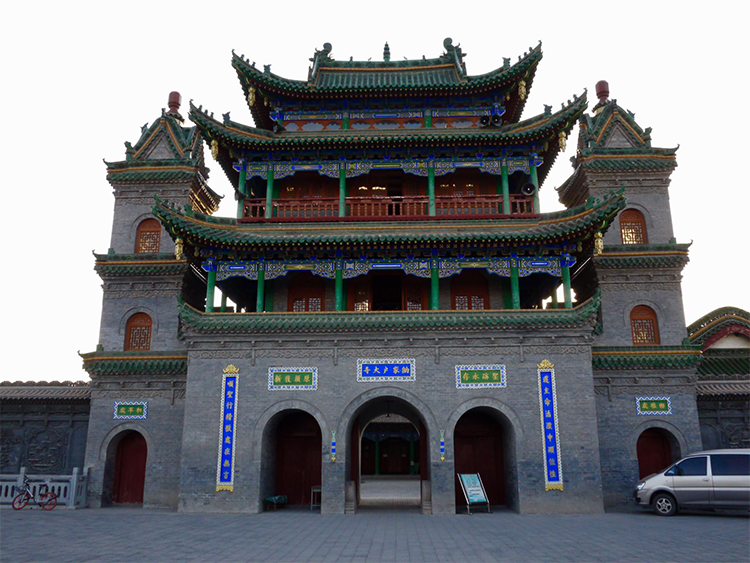Najiahu Mosque: A Window into Chinese Mosque History and Ningxia’s Islamic Architecture
Introduction: A Shrine Across Time
In Najiahu Village, Yongning County, Ningxia, an ancient mosque stands as a graceful fusion of Chinese architectural aesthetics and Islamic faith. Founded in the third year of the Jiajing reign (1524) during the Ming Dynasty, Najiahu Mosque has weathered nearly five centuries and remains the spiritual center for local Muslims. Inside, sweeping eaves, brick-and-wood structures, delicate carvings, and a solemn atmosphere of worship blend history with devotion. More than a religious site, the mosque testifies to the living exchange between Hui and Han cultures and draws cultural travelers eager to experience its unique charm.
1. History and Cultural Status
Najiahu Mosque is one of Ningxia’s oldest Islamic religious buildings, tracing back to the Ming Jiajing era. Over centuries it has witnessed the daily life and transformations of Hui Muslim communities in the region. Despite several restorations, the mosque retains much of its original architectural character. In 1985 it was designated a key protected cultural relic of the Ningxia Hui Autonomous Region, making it an important subject for study of Chinese Islamic architecture and Hui–Han cultural exchange.
As the core religious venue for local Muslims, Najiahu Mosque hosts daily prayers and major festivities such as Eid al-Fitr and Eid al-Adha. On these holidays the mosque fills with worshippers who gather for communal prayer, recitation, and greeting, offering a powerful display of religious atmosphere and community cohesion.
2. Architecture and Artistic Highlights: A Model of Sino-Islamic Fusion
The mosque’s architecture uniquely melds traditional Chinese timber construction with Islamic religious elements. The complex includes the main prayer hall, the Bangke tower (call-to-prayer tower/minaret), and north and south wing rooms, arranged with disciplined harmony.
Prayer Hall: A Solemn Space of Faith
The prayer hall is built with a brick-and-wood structure, featuring upturned eaves and ornate carvings, and can accommodate over a thousand worshippers. Interior decoration remains restrained and dignified, avoiding figurative ornamentation in line with Islamic aesthetics; Arabic calligraphy and geometric patterns are used for embellishment. Sunlight filters through latticed windows to create an atmosphere both tranquil and sacred.
Bangke Tower: The Sound That Calls the Faithful
The Bangke tower serves as the mosque’s visual landmark and is used to summon worshippers. Architecturally it follows a traditional Chinese pavilion form, while its top is marked by a crescent symbol, signaling Islamic identity. Standing beneath it, one can imagine the faint echo of the historic call to prayer rippling over the village.
North and South Wing Rooms: Hui–Han Cultural Convergence
The north and south wings once served as scripture halls and classrooms; their preserved wooden structures showcase classical Chinese craftsmanship combined with Islamic religious function. These features present an excellent example of Hui–Han cultural integration.

3. Religious Activities and Immersive Experiences
Najiahu Mosque is both a symbol of faith and an ideal place to experience Islamic culture.
Daily Prayers and Festivals
Muslims observe five daily prayers (Fajr, Dhuhr, Asr, Maghrib, Isha). Visitors are welcome to tour the mosque outside prayer times to soak in its peaceful ambiance. During Eid al-Fitr or Eid al-Adha, large congregations gather in festive attire for communal prayer and celebration—an impressive, heartfelt experience.
Participation Etiquette and Visitor Guidelines
– Dress code: Dress modestly when entering the mosque. Women are advised to wear a headscarf; avoid short skirts, shorts, or revealing clothing.
– Behavior: The main prayer hall is primarily for worshippers; visitors should observe from outside or designated areas. Always ask permission before photographing and avoid interrupting worshippers.
– Donations: If you wish to support mosque maintenance, donations are voluntary. Beware of unofficial solicitations promoting paid “merit” services.
4. Setting and Atmosphere
Najiahu Mosque sits in a tranquil village surrounded by trees and farmland, far from urban noise. The atmosphere inside the compound is solemn yet peaceful, inhabited by both devoted worshippers and curious visitors. At sunrise or dusk, slanted light on the ancient brick walls heightens the sense of sanctity.
5. Travel Planning Advice
– Suggested visit duration: 1–2 hours to appreciate architecture and cultural context.
– Best time to visit: Early morning or late afternoon for soft light and milder temperatures.
– Combine with: Consider pairing the visit with nearby attractions such as the China Hui Culture Park and the Western Xia Mausoleums to create a deeper Ningxia Hui-culture itinerary.

6. Practical Tips
– Opening hours: Open all day except during active prayer times; check local schedules in advance.
– Transportation:
– Public transport: From Yinchuan take a bus to Yongning County, then local transport to Najiahu Village.
– Self-drive: Parking is available near the mosque.
– Language: Signage is primarily in Chinese; learning basic religious terms or using a translation app is helpful.
– Services: Rest areas are available on-site; nearby Hui restaurants offer local cuisine.
Conclusion: A Dual Treasure of Faith and Culture
Najiahu Mosque is more than an architectural monument; it is a living historical record of Hui–Han cultural exchange. Architects, cultural scholars, and travelers seeking spiritual calm will all find something meaningful here. If you travel to Ningxia, include Najiahu Mosque in your itinerary to feel the resonance of faith and history firsthand.


